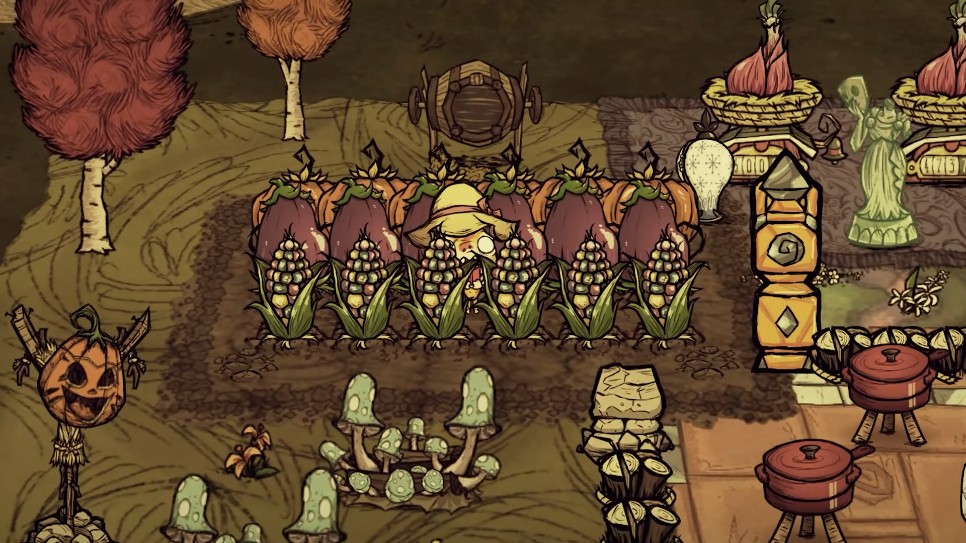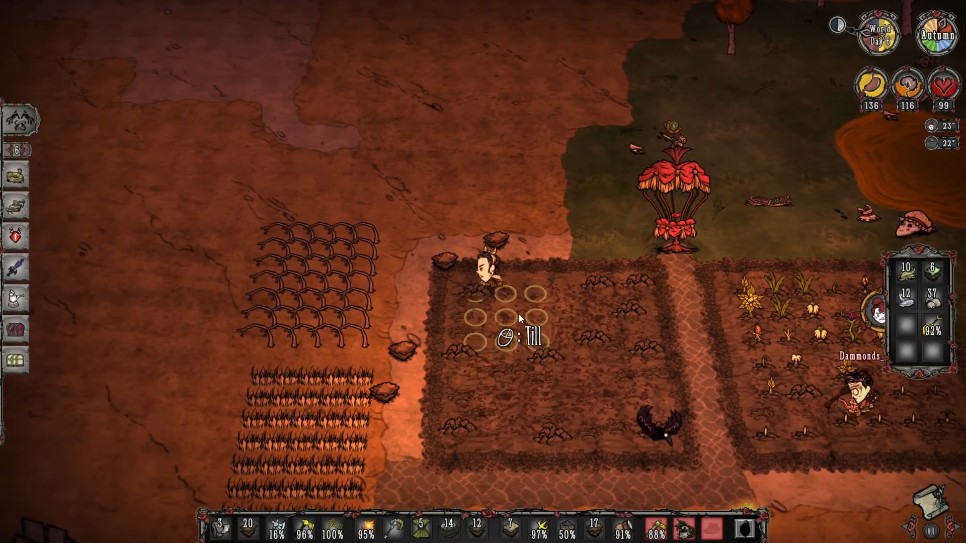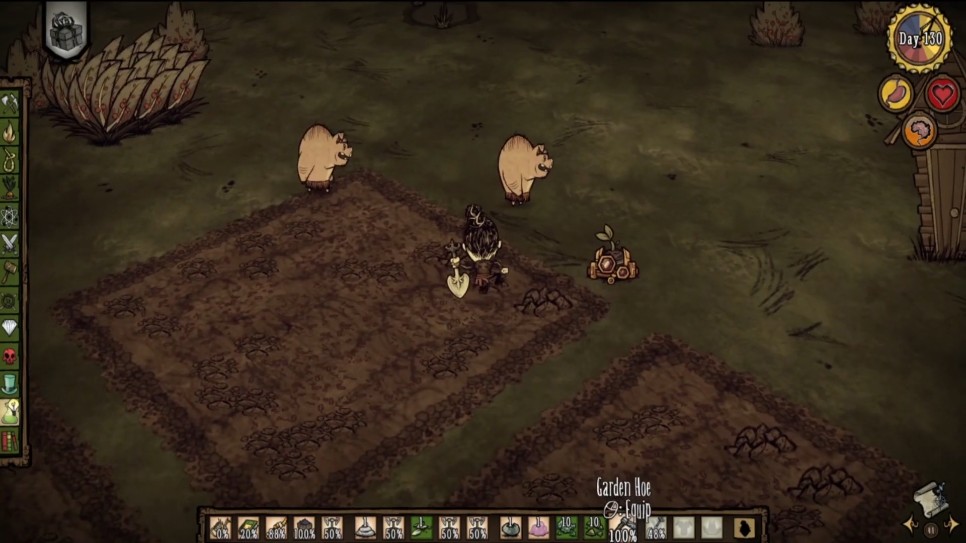In the world of Don't Starve Together, survival is not just about fending off monsters and managing resources; it's also about cultivating a sustainable food source through farming. One of the key tools in this endeavor is the Garden Digamajig, a device that transforms ordinary ground into fertile farm soil. This guide will walk you through how to use the Garden Digamajig effectively, helping you establish a thriving farm in the harsh wilderness of DST.
Introduction to the Garden Digamajig
The Garden Digamajig is an essential item in DST, introduced in the Return of Them update. It allows players to convert any turf into farmable soil, making it possible to plant seeds and grow crops in previously inhospitable areas. This device is particularly useful for setting up farms near your base, ensuring a steady supply of food without having to venture far.
Crafting the Garden Digamajig
To craft a Garden Digamajig, you will need the following materials:
- Three Boards
- Two Rope
- Two Flint
These materials can be easily gathered from the environment. Boards can be crafted from logs, rope can be made from vines, and flint can be found on the ground.
Materials: - 3 Boards - 2 Rope - 2 Flint
Location: Science Machine under the Food tab
How to Use the Garden Digamajig
Using the Garden Digamajig is straightforward:
Deploy the Garden Digamajig: Place it on the ground where you want to create a farm plot. It will automatically plow the turf into farm soil in about 15 seconds.
Till the Soil: Once the turf is converted, use a Garden Hoe to till the soil. This step is necessary to prepare the soil for planting seeds.

Tilling the newly created farm soil to prepare for planting.
- Plant Seeds: After tilling, you can plant your seeds. Ensure you have the right type of seeds for the current season, as planting out-of-season seeds can lead to poor growth or failure.

Planting seeds in the prepared farm plot.
- Tend to Your Crops: Regularly water and talk to your plants to keep them healthy and happy. This can be done using a watering can and items like a Beefalo Horn or One Man Band.
Tips for Effective Farming
Crop Selection: Choose crops that complement each other in terms of nutrient consumption and production. For example, planting potatoes and tomatoes in a 1:1 ratio can create a balanced nutrient cycle.
Seasonal Planting: Ensure that you plant seeds appropriate for the current season. Out-of-season planting can lead to reduced growth or failure.
Fertilization: Use fertilizers like manure, compost, or growth formula to enhance plant growth. Different plants require different nutrients, so it's crucial to research what each crop needs.
Stress Management: Keep plant stress low by avoiding overcrowding, ensuring proper watering, and maintaining a balanced nutrient cycle. Low stress levels can lead to giant crops, which provide more resources.
Managing Plant Stress
Plant stress is a critical factor in farming. High stress can prevent crops from growing into giant versions, which yield more resources. Here are some stressors to manage:
Overcrowding: Ensure that there are no more than 10 plants in a single farm plot.
Nutrient Deficiency: Use fertilizers to maintain a balanced nutrient level in the soil.
Watering: Regularly water your plants, especially during dry seasons like summer.
Seasonal Incompatibility: Plant crops that are suitable for the current season.
Family Requirement: For giant crops, ensure that there are at least four of the same plant type nearby.
Common Mistakes to Avoid
Incorrect Terrain: The Garden Digamajig can only be used on certain turfs. Ensure you're using it on compatible ground.
Insufficient Tending: Neglecting to water or talk to plants can lead to poor growth and increased stress.
Inadequate Fertilization: Failing to provide necessary nutrients can stunt plant growth.

Common mistakes in farming, such as overcrowding and nutrient deficiency.
Real-World Analogies for Farming in DST
Farming in DST can be likened to gardening in real life, where careful planning and maintenance are crucial for success. Just as a real-world gardener must consider factors like soil quality, water availability, and pest control, a DST player must manage plant stress, nutrient cycles, and seasonal changes to maximize crop yields.
Example: Balancing Nutrients
Imagine a small garden where you plant both potatoes and tomatoes. In real life, these plants have different nutrient requirements. Similarly, in DST, potatoes and tomatoes consume and produce different nutrients, making them a good pair for maintaining soil health. By balancing these nutrients, you can create a sustainable farming system that minimizes waste and maximizes output.
Conclusion and Additional Resources
Mastering the Garden Digamajig is just the first step in creating a thriving farm in Don't Starve Together. By understanding how to use this tool effectively and managing plant stress, you can ensure a steady supply of food and resources, making survival much easier.
For further learning, consider the following resources:
DST Wiki: Offers detailed information on farming mechanics, including nutrient cycles and plant stress management.
YouTube Guides: Videos like those by KaTome provide in-depth tutorials on farming strategies and crop combinations.
Reddit Forums: Communities like r/dontstarve and r/dontstarvetogether offer valuable insights and tips from experienced players.
By combining these resources with the strategies outlined in this guide, you'll be well on your way to becoming a skilled farmer in the world of DST.

A successful farm with healthy crops, showcasing effective farming techniques.